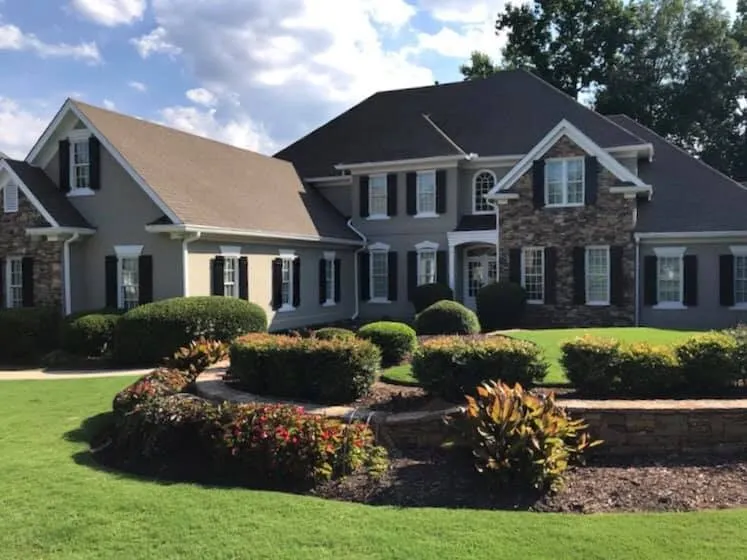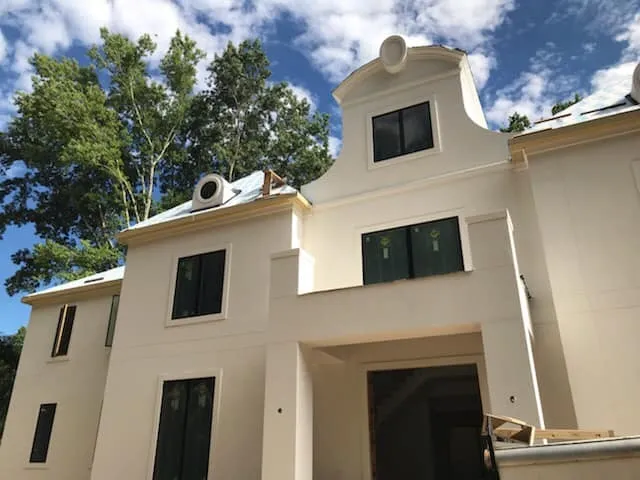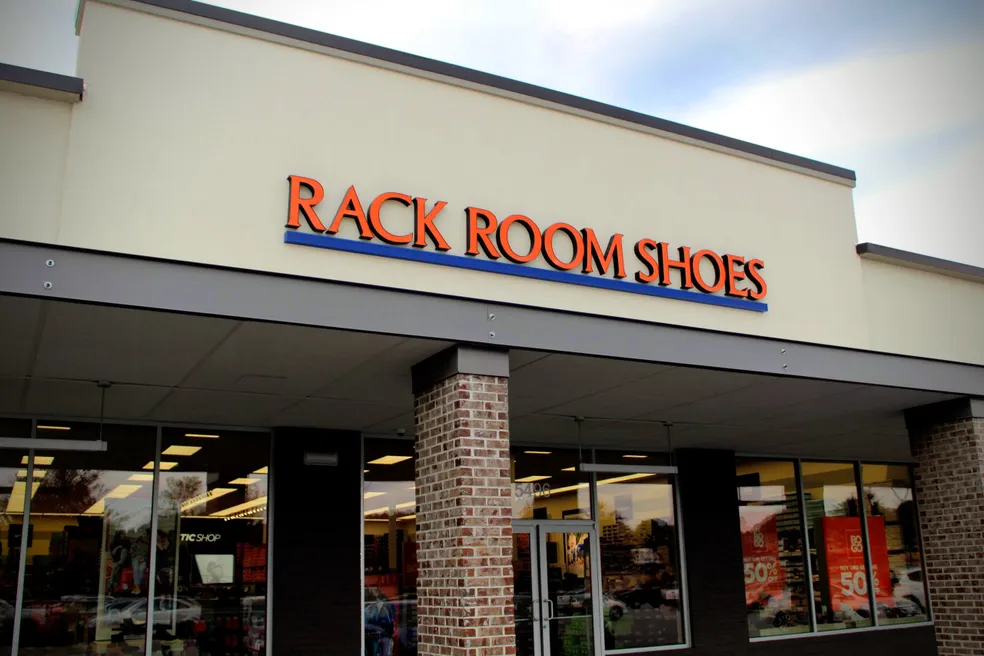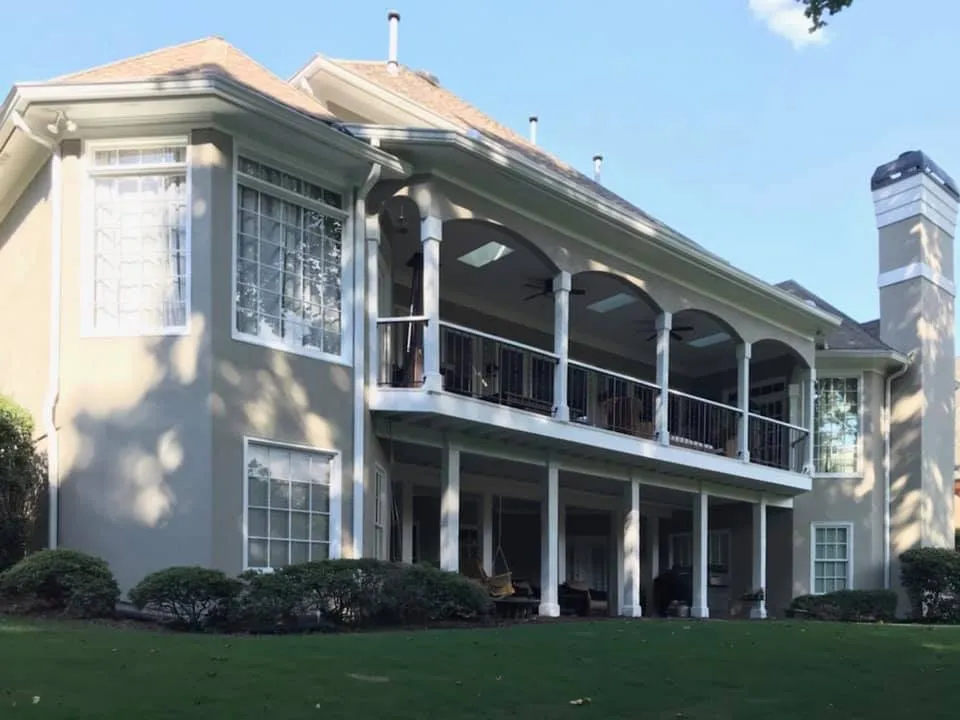Kickout Flashing
Specializing in advanced stucco repair, our team provides comprehensive solutions for kickout flashing, a crucial component that protects your commercial property from water intrusion and subsequent damage.
Have a question before scheduling?
Expert Stucco Installation & Repair for Homes and Businesses in Georgia
Experience predictable project costs with transparent pricing – materials, labor, and cleanup included. Proudly serving Georgia for over 24 years.
- Clear, upfront pricing with no hidden fees or surprises
- Prompt, local service—flexible scheduling for both homeowners and builders.
- Expert stucco installation and repair for commercial and residential properties.
- Clean, professional work zones with respect for your property and timeline.
- Easy estimates and communication with a responsive local team.
- Quality craftsmanship that meets local codes and enhances long-term value.

Our Stucco Process: What to Expect From Start to Finish
Request Your Quote
Tell us about your project – residential or commercial – and we’ll provide a detailed, no-obligation estimate with clear timelines.
On-Site Evaluation
We inspect the property to assess existing surfaces, moisture control, and project scope to ensure accurate pricing and flawless results.
Material Selection & Preparation
We help you choose the right stucco type, texture, and color for your building, then prep the surface for proper adhesion and durability.
Expert Application
Our licensed team applies each layer with precision — from scratch coat to finish coat — ensuring consistency, strength, and visual appeal.
Curing & Quality Inspection
After application, we allow proper curing time and perform a full quality check to confirm color uniformity, adhesion, and finish integrity.
Cleanup & Final Walkthrough
We leave the site clean and conduct a final walkthrough with you to guarantee satisfaction before closing out the project.
Preventing Water Damage with Kickout Flashing
Our team at Advanced Stucco Repair offers specialized services in kickout diverter flashing and roof-wall intersection flashing. These techniques are vital for preventing water damage, ensuring your commercial property remains secure and dry. Don’t wait until it’s too late – contact us today for a comprehensive flashing repair service.
- Kickout diverter flashing directs water away from vulnerable areas of your building.
- Roof-wall intersection flashing provides an additional layer of protection against moisture intrusion.
- Our comprehensive flashing repair service identifies and resolves any potential issues, enhancing the longevity of your property.
- Maintaining a robust moisture barrier flashing system is key to preventing costly water damage in the future.


Optimizing Building Protection with Kickout Flashing
Whether you manage a retail complex, office building, or industrial facility, the integrity of your structure is paramount. Advanced Stucco Repair understands the unique challenges faced by different industries, including tight budgets, stringent compliance standards, and demanding timelines. We help our clients navigate these complexities by providing expert advice on the most effective flashing techniques such as kickout diverter and roof-wall intersection flashing to prevent water damage and ensure long-term building resilience.
- We provide tailored advice based on your building’s specific needs and industry regulations.
- Our team helps you make informed decisions about the most effective moisture barrier flashing for your property.
- We offer practical solutions that fit within your budget without compromising on quality or effectiveness.
- With our flashing repair service, we ensure timely intervention to prevent potential water damage and costly repairs in the future.
Maximizing Property Value with Kickout Flashing
Implementing Kickout Flashing techniques can significantly enhance your property’s durability, reducing the risk of structural damage and maintaining its aesthetic appeal. By investing in our expert services, you safeguard your commercial property, potentially increasing its market value and attractiveness to potential tenants or buyers.
- Our kickout flashing techniques help preserve the structural integrity of your building, mitigating the risk of water-related damages.
- The aesthetic appeal of your property is maintained, making it more attractive to potential tenants or buyers.
- By preventing water damage, you reduce the need for frequent repairs, saving on long-term maintenance costs.
- Our expert advice on moisture barrier flashing can help increase your property’s resilience against harsh weather conditions.

Take Action for Your Property’s Protection
Ensure your commercial property’s safety and longevity with our expert kickout flashing services. Contact Advanced Stucco Repair today for a personalized consultation and quote.
Our dedicated team at Advanced Stucco Repair is at-the-ready to provide you with great customer service and first class Kickout Flashing. Reach out to us at (888) 592-1304 to discuss your Kickout Flashing needs today!

Detailed Approach to Kickout Flashing
At Advanced Stucco Repair, we employ a meticulous process for kickout flashing installation and repair. Our experts first conduct a thorough inspection of your property’s vulnerable areas, identifying potential weak points. We then use high-quality materials for kickout diverter flashing and roof-wall intersection flashing, ensuring maximum protection against water intrusion. Our team follows strict industry standards and guidelines, ensuring each project is completed with precision and efficiency.
- We begin with a detailed inspection to identify areas prone to water damage.
- High-quality materials are used in all our flashing installations for enhanced durability.
- Our team adheres to stringent industry standards and guidelines in every project.
- We ensure precise installation of kickout diverter and roof-wall intersection flashings.
- Our efficient workflow minimizes disruption, completing projects within the agreed timelines.
Investing in Kickout Flashing: A Cost Perspective
When considering the cost of kickout flashing services, several factors come into play. These include the scope of the project, accessibility to the installation area, potential risks, labor requirements, and equipment used. Compliance with industry standards and market conditions may also influence pricing. Remember that quotes for our services, whether it’s kickout diverter flashing or roof-wall intersection flashing, depend on your property’s specific needs and conditions.
- The project’s scope – larger buildings or complex structures may require more resources and time.
- Accessibility to the installation area – difficult access points can increase labor costs.
- Potential risks such as existing water damage could affect the overall cost.
- The type of equipment used for installation or repair can influence pricing.
- Compliance with industry standards may necessitate additional procedures or materials, impacting the total cost.


Common Commercial Needs for Diverter Flashing
In a commercial setting, diverter flashing is often required in areas where the roof meets vertical walls, such as around chimneys or skylights. For instance, a multi-story office building may need kickout flashing to direct rainwater away from windows and prevent seepage into the interior. Similarly, a shopping mall with complex roof design could benefit from roof-wall intersection flashing to safeguard against potential water damage.
- Office buildings often require diverter flashing around windows.
- Shopping malls with intricate roofs benefit from intersection flashing.
- Industrial facilities use kickout flashing to protect against rainwater seepage.
- Diverter flashing is crucial for commercial buildings with multiple roof-wall intersections.
Our Proactive Approach to Kickout Flashing
At Advanced Stucco Repair, we follow a systematic process for kickout flashing services. Starting with a detailed site evaluation, we assess the building’s unique needs and potential challenges. We then develop a customized plan that includes scheduling, safety measures, and compliance considerations. Our execution phase involves precise installation or repair of kickout diverter flashing and roof-wall intersection flashing, followed by comprehensive documentation.
- We begin with a thorough site evaluation to understand your building’s specific needs.
- A customized plan is developed, outlining the schedule and safety precautions.
- We execute the plan with precision, installing or repairing the necessary flashing components.
- Compliance considerations are integrated into every step of our process.
- Upon completion, we provide comprehensive documentation for your records.

Testimonials From Our Customers
At Advanced Stucco Repair, we believe that every exterior matters. Home and business owners trust us for expert stucco installation, repairs, and maintenance—whether it’s a single-family residence or a commercial building. We focus on dependable service, clear communication, and results that last.

Frequently Asked Questions about Kickout Flashing
Get answers to common queries about our kickout flashing services, helping you make informed decisions for your commercial property’s protection.
What is the scope of your kickout flashing services?
We offer a full range of services including installation, repair, and maintenance of kickout diverter flashing and roof-wall intersection flashing. Our team can handle projects of varying complexity and size.
How long does a typical kickout flashing project take?
The timeline for each project varies based on its complexity and the specific needs of your building. However, we strive to complete all projects efficiently without compromising on quality.
Are there any access requirements for kickout flashing installation?
Yes, our team requires safe access to the roof-wall intersections where the flashing will be installed or repaired. We will coordinate with you to ensure minimal disruption during the process.
How do you ensure safety and compliance during the project?
We adhere strictly to industry standards and regulations throughout every project. Our team takes all necessary precautions to ensure safety while maintaining compliance with local building codes.
What is your process for scheduling and communication during a project?
We prioritize clear communication throughout every step of our process. Once we have assessed your property’s needs, we will provide a detailed schedule and keep you updated on our progress regularly.
